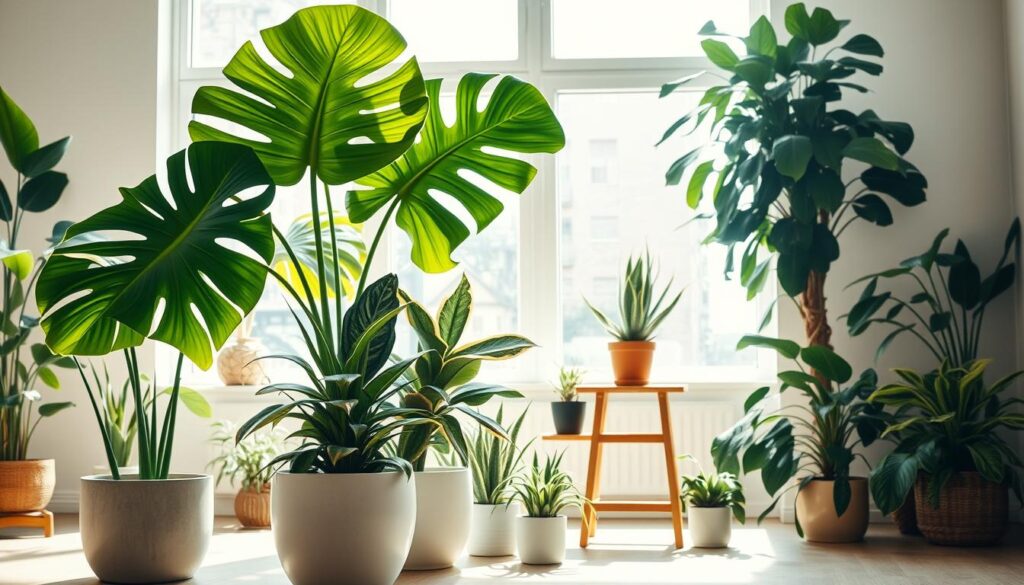When it comes to improving indoor air quality, many of us turn to houseplants, believing they are a natural solution. However, recent studies have revealed that some plants can actually harm indoor air quality, especially in bedrooms.
While plants are known for their aesthetic appeal and potential to freshen the air, not all species are beneficial. In fact, certain plants can release allergens or grow mold when overwatered, negatively impacting the air we breathe.
Understanding which plants to avoid is crucial for maintaining a healthy indoor environment. This article will guide you through identifying problematic plants and offer expert insights on creating a cleaner, fresher space without compromising health or comfort.
Understanding Why Bedroom Air Quality Matters
Bedroom air quality plays a vital role in your health and sleep. Clean air ensures better breathing and a restful night’s sleep, while poor air quality can lead to health issues.
Impact on Health and Sleep
Indoor air pollutants like VOCs and formaldehyde can cause allergies and respiratory problems. These chemicals are found in everyday items, including furniture and cleaning products, and can linger in the air, affecting your well-being.
The Role of Indoor Air in Your Well-Being
Even with plants, bedrooms can still harbor pollutants. A NASA study highlighted how plants help purify air, but real-world conditions show that overwatering can lead to mold, reducing air quality benefits.
Proper ventilation and filtration are essential. Studies show that ventilated spaces have fewer pollutants than sealed ones. Even one problematic plant, like a toxic palm, can affect those with allergies.
Poor air quality can lead to fatigue and long-term health issues. Ensuring good air quality in your bedroom is crucial for maintaining energy levels and overall health.
By understanding these factors, you can take steps to improve your bedroom’s air quality, promoting better sleep and health.
The Worst Plants for Your Bedroom Air Quality and Smell
When selecting plants for your home, it’s important to consider how they might affect indoor air quality. Some species, while aesthetically pleasing, can actually harm the environment and your health.
Identifying Problematic Species
Certain plants, such as ferns, weeping figs, and orchids, can trigger allergies or worsen air quality. Overwatering these plants often leads to mold growth, which can release allergens into the air. Additionally, some plants emit volatile organic compounds (VOCs) or particulate matter, which can degrade indoor air quality rather than improve it.
Scientific studies highlight the gap between laboratory conditions and real-world scenarios. While plants may perform well in controlled environments, their benefits are often reduced in typical home settings. For example, certain ferns and orchids, often cited in studies, can have negative impacts when not properly maintained.

The presence of these plants in small spaces, like a bedroom, can further reduce their potential benefits. It’s crucial to be informed about the species you choose to display in your home to avoid exacerbating indoor air quality issues.
| Plant Species | Why They’re Problematic | Impact on Air Quality |
|---|---|---|
| Ferns | Can trigger allergies and release spores | Contribute to allergens in the air |
| Weeping Figs | Release VOCs and require frequent watering | Emit pollutants and create moisture that fosters mold |
| Orchids | Some species release particulate matter | Can worsen air quality if not properly maintained |
By understanding which plants to avoid and how to care for them, you can create a healthier indoor environment that supports your well-being.
Debunking Myths and Examining Scientific Research
While houseplants are often praised for their air-purifying abilities, it’s important to separate fact from fiction. Let’s dive into the science behind plant effectiveness and explore what experts have to say.
NASA Study Versus Real-World Conditions
The famous NASA study from the 1980s found that certain plants could remove pollutants like formaldehyde and VOCs in a controlled, sealed environment. However, real homes aren’t airtight labs. In typical indoor settings, ventilation plays a much bigger role than plants in maintaining clean air.
Experts like Michael Waring explain that while plants do help, their impact is often exaggerated. In well-ventilated spaces, the contribution of plants to air quality is minimal compared to HVAC systems.
EPA Findings and Expert Opinions
The EPA has noted that achieving NASA-level air purification would require a huge number of plants—far more than most people can manage. BC Wolverton, who led the NASA study, agrees that real-world benefits are limited without proper care and conditions.
Environmental scientists emphasize that factors like ventilation, HVAC efficiency, and pollutant sources are far more influential in determining indoor air quality than the presence of plants. This means that while plants can be a helpful addition, they shouldn’t be the sole strategy for improving air quality.
Understanding these limitations helps set realistic expectations and encourages a more holistic approach to creating a healthier home environment.
Practical Strategies for Improving Your Indoor Air
Creating a healthier indoor environment starts with simple, effective strategies. By combining the right plants with proper care and additional air improvement methods, you can enhance your home’s air quality.
How to Choose the Right Houseplants
Selecting houseplants that align with your lifestyle is key. Look for low-maintenance, non-toxic options that are less likely to cause allergies. Snake plants and spider plants are excellent choices due to their hardiness and air-purifying abilities.
Consider the lighting conditions in your home. Plants like snake plants thrive in low-light areas, while others may need more sunlight. This ensures they remain healthy and effective at improving indoor air quality.
| Plant Species | Maintenance Requirements | Air Quality Benefits |
|---|---|---|
| Snake Plant | Low watering, infrequent pruning | Removes VOCs, improves oxygen flow |
| Spider Plant | Moderate watering, occasional trimming | Effectively removes air pollutants |
| ZZ Plant | Low watering, rare pruning | Thrives in low-light, reduces VOCs |

Maintenance Tips to Prevent Mold and Dust
Proper care is essential to prevent mold growth and dust accumulation. Water plants only when the soil feels dry to avoid overwatering, which can lead to mold. Regularly dust plant leaves to ensure they efficiently purify the air.
In addition to plants, integrate mechanical air cleaners and ensure good ventilation. This multi-faceted approach provides better indoor air quality management. While snake plants are beneficial, combining them with other strategies yields the best results.
Understanding VOC emissions from household materials is also crucial. Regularly inspecting and replacing items that emit VOCs can significantly improve your home’s air quality, creating a healthier environment for everyone.
Parting Advice for a Fresher, Cleaner Bedroom Space
Enhancing your home’s air quality is a journey that goes beyond just adding plants. While plants can boost aesthetics and offer some benefits, true improvement comes from a combination of strategies. Start by reassessing any plants in your space that might be causing issues and consider switching to low-maintenance options like snake plants or spider plants, which are known for their air-purifying abilities.
Don’t forget the power of proper care. Water plants only when needed to prevent mold, and keep their leaves dust-free. Pair these habits with tools like dehumidifiers and air purifiers for the best results. Remember, achieving fresh air is about balance—plants are just one piece of the puzzle.
For more tips or expert advice, explore resources or consult with an HVAC specialist. With the right approach, you can create a cleaner, healthier home environment.
